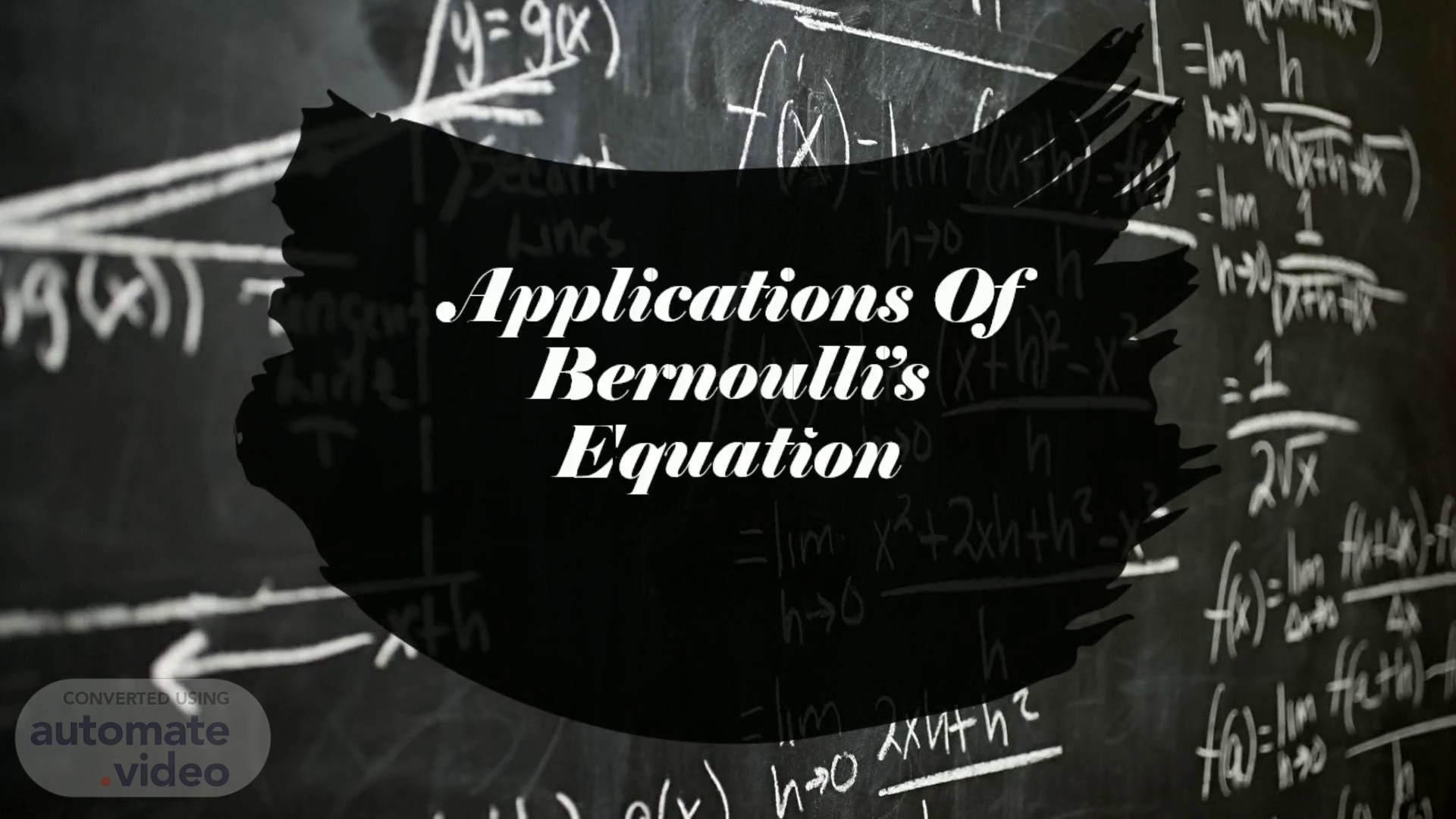
Page 1 (0s)
[Audio] Hi everyone Today our topic is Applications of Bernoulli's equation.
Page 2 (9s)
[Audio] Torricelli's theorem The speed of efflux is equal to the speed gained by fluid while passing through height under the action of gravity. Consider a large storage tank, which develop a leak at bottom. The pressure at both ends is same p one equal to p two equal to p The height is the difference between height of fluid level h one and height of hole h two from the ground h equal to h one minus h two The velocity at the top of fluid is considered zero While at the bottom its velocity is to be determined v two equal to v.
Page 3 (55s)
[Audio] By Bernoulli's equation P one plus half rho v one square plus rho g h one equal to P two plus half rho v two square plus rho g h two Substituting values and rearranging we get V equal to under root two g h The speed is same as vertical velocity which a body gain after falling through a height h.
Page 4 (1m 26s)
[Audio] Venturi metre A device use to measure the speed flow rate through a piping system. it works on principle of pressure difference between restricted and unrestricted flow regions..
Page 5 (1m 41s)
[Audio] Consider a fluid flow through a pipe of irregular shape as shown in figure Let p one and p two be the pressure and v one and v two be the velocities of wide and narrow sections of tube respectively The Bernoulli's equation can be written as P one plus half rho v one square plus rho g h equal to P two plus half rho v two square plus rho g h Rearranging equations we get P one minus p two equal to half rho v two square minus half rho v one square By equation of continuity A one v one equal to a two v two Rearranging and find value of v two put in above equation we get P one minus p two equal to half rho a one v one by a two square minus half rho v one square.
Page 6 (2m 45s)
[Audio] Rearranging the equation and taking root to fing v one V one equal to a two into square root of two p one minus p two by rho a one square minus a two square This is the solution for speed in pipe by venturi meter when barometer is used When no barometer is used then putting P one minus p two equal to rho g h in above equation We get V one equal to a two under root two g h by a one square minus a two square.
Page 7 (3m 23s)
[Audio] Thanks for watching us. Thanks for watching us.